An unsuspected treasure on the walls of St Saviour’s church
Two large frames with a red background, on which there were very many small metal objects, were recently taken down from the walls of St Saviour’s church. The first aim of the operation was to clean them in view of an exhibition for June 2023. What could these pictures placed so high up contain, old junk and pieces of glass or a treasure trove? A visit by the collector George Al’Ama and Jack Hawileh, a specialist in ancient jewellery, raised these questions and allowed rediscovering some absolutely unique pieces.
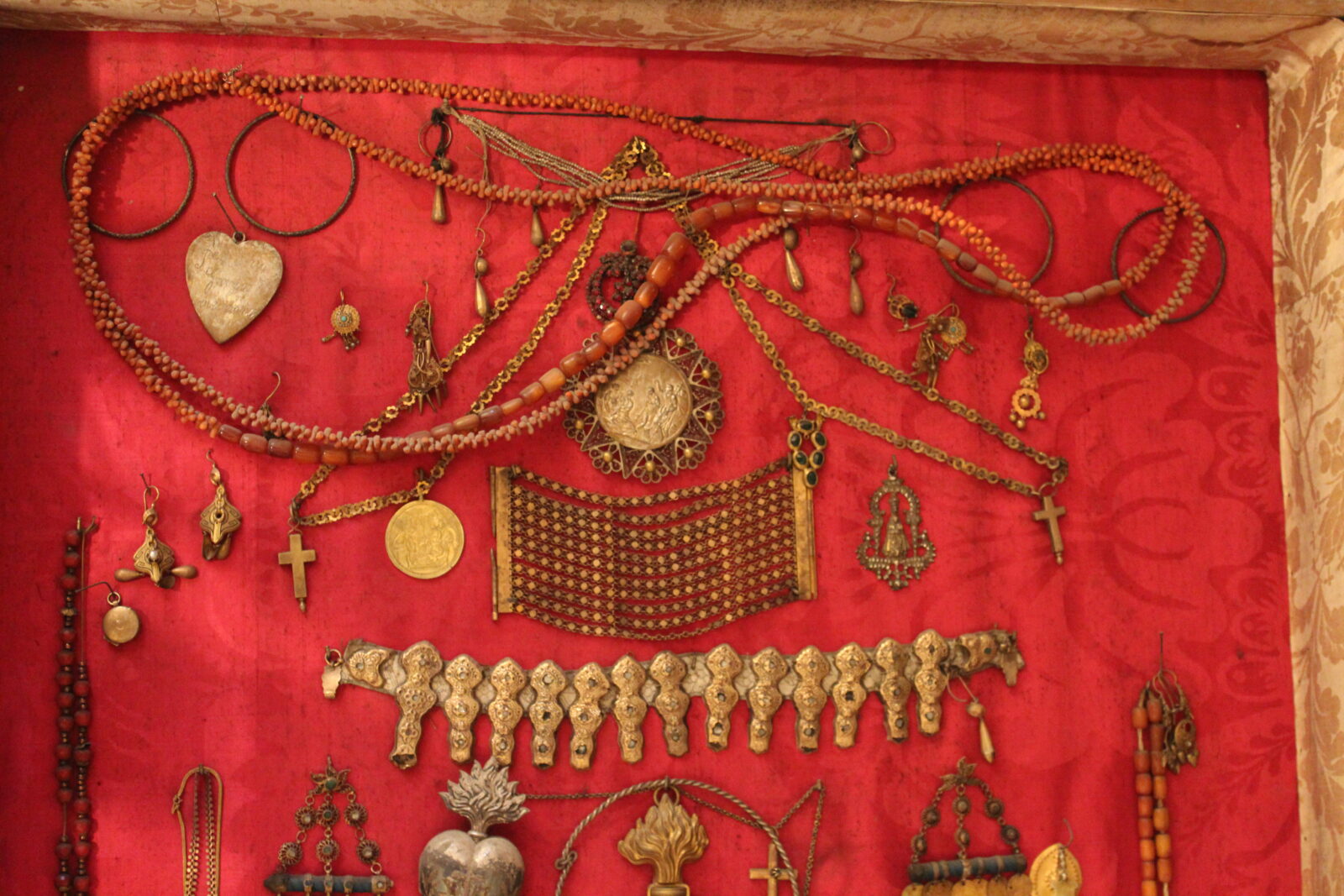
At the altar of the Virgin Mary in St Saviour’s church, after a delicate and somewhat technical operation, the two large frames which had watched over parishioners for almost 150 years were taken down. Holding eclectic compositions of coins, medallions, earrings and other pieces of jewellery, pieces of headdresses and even small objects of mother-of-pearl, these two large frames contained prayers, supplications and the piety of the people of the Old City and foreign pilgrims.
Despite the thick layer of dust, some objects had kept their shine, proving how precious their materials were. Visiting St Saviour, George Al’Ama, a renowned specialist of Palestinian art and a member of the scientific committee of the Terra Santa Museum, immediately stopped when he saw these frames which were anything but eye-catching.
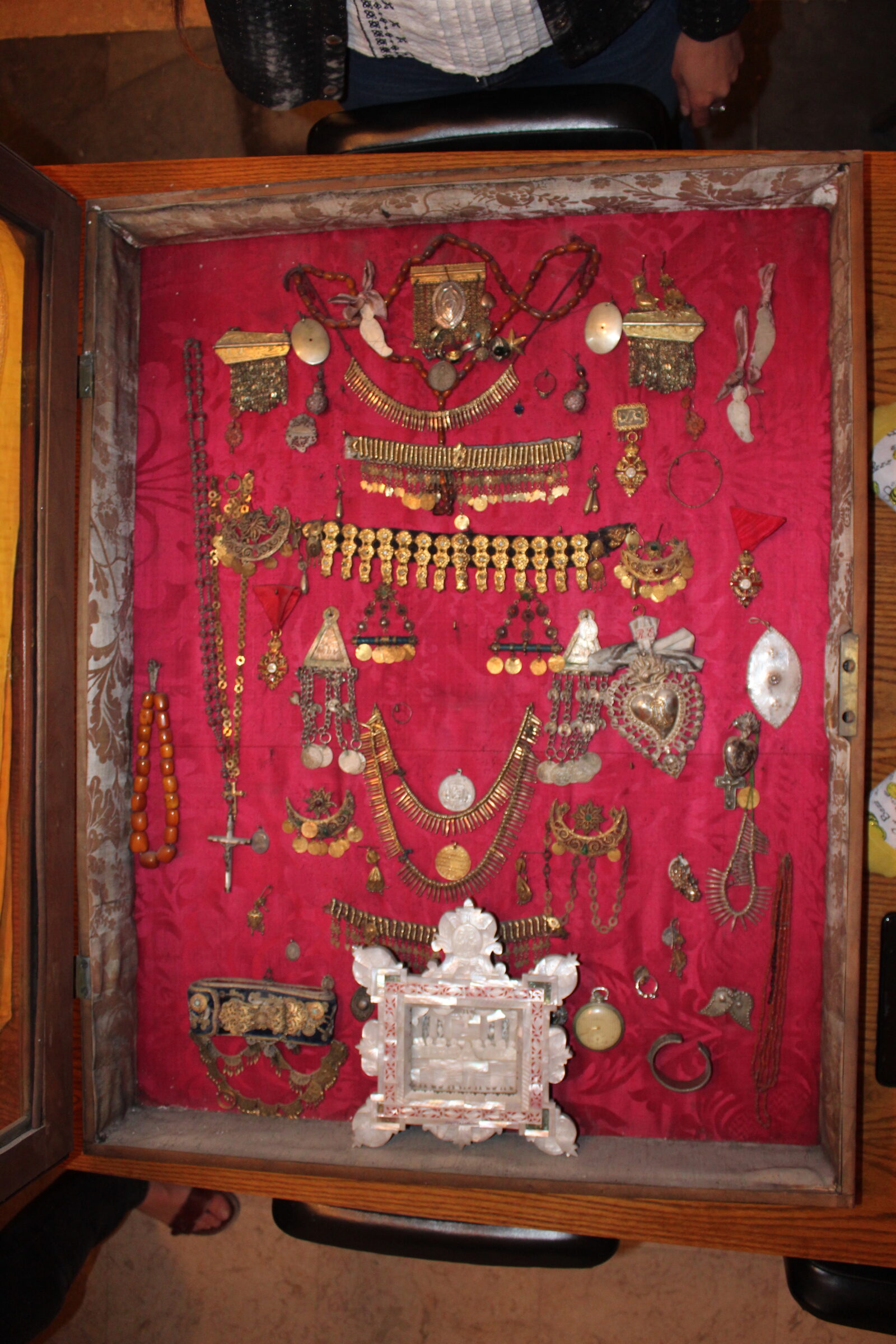
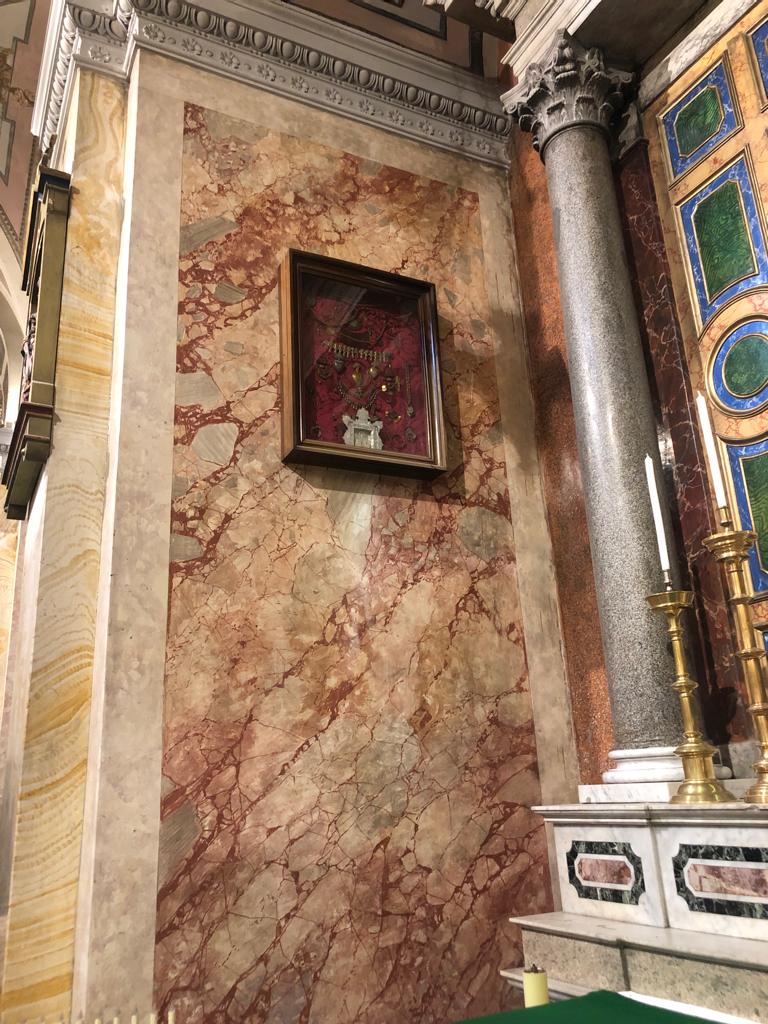
From surprises to astonishment
“These two pictures are a museum in themselves!” he exclaimed straight away. When he opened them, the collector’s hands turned black: “It’s the residue of the smoke of candles” was George’s analysis, “I think that the frames have been there since the church was inaugurated. They were hung up very high, which protected the treasures they contain.”
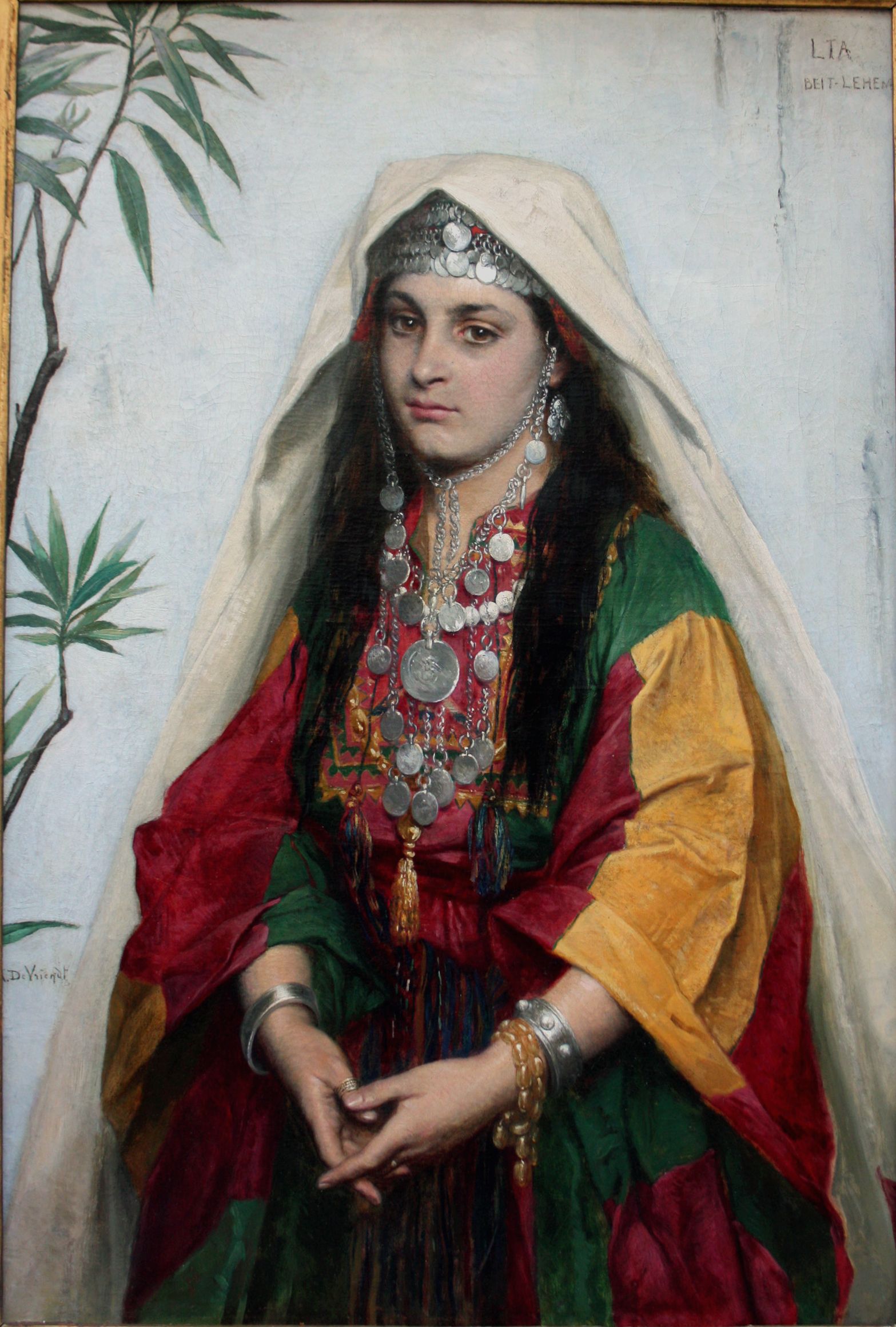
Large amber necklaces ran across the top of the frames like stripes. With his characteristic liveliness, George found in a few seconds the photo of a painting by Albrecht de Vriendt, The bride of Bethlehem. In an Orientalist style, we see a young girl in bridal attire, and on her wrist, under the silver iznaq, a long row of amber beads. “These necklaces really existed,” the collector says in wonder. Jack Hawileh, a Jerusalemite specialized in amber objects, was immediately informed. One week later, here he was with us, comparing the quality and the size of the beads. The larger and opaquer the beads, the better the quality, he explained to the neophytes around him.
Reviewing the objects continued: in the middle of jewellery of variable quality, some pieces were intriguing. Jack concentrated on four coins assembling twisted blue glass rods, clasped by slim cylinders ending in gold Ottoman coins. “I find this infinitely moving,” Jack continued moving the small metal plaques cut out into the shape of babies, held together by a ribbon. “These ex-votos were put there by women asking to have children.”
The whole world in a box
We then went on to some very precious large bracelets, very probably made in Syria : the fastenings holding the golden chains have, engraved in Arabic, the inscription “Mar Youssef” on one, for the other “Issa” and “Maria”. The Holy Family on the wrists. These bracelets were most probably made in Aleppo, where there is a large Christian community. Two or three chains typical of North Africa, jewellery from Bohemia, Eastern Europe, Turkey , Central Asia… The origin of the objects seemed to venture as far as Samarkand, or even to India or China, if we are to believe two necklaces and a brooch decorated with turquoise. The whole world in a box.
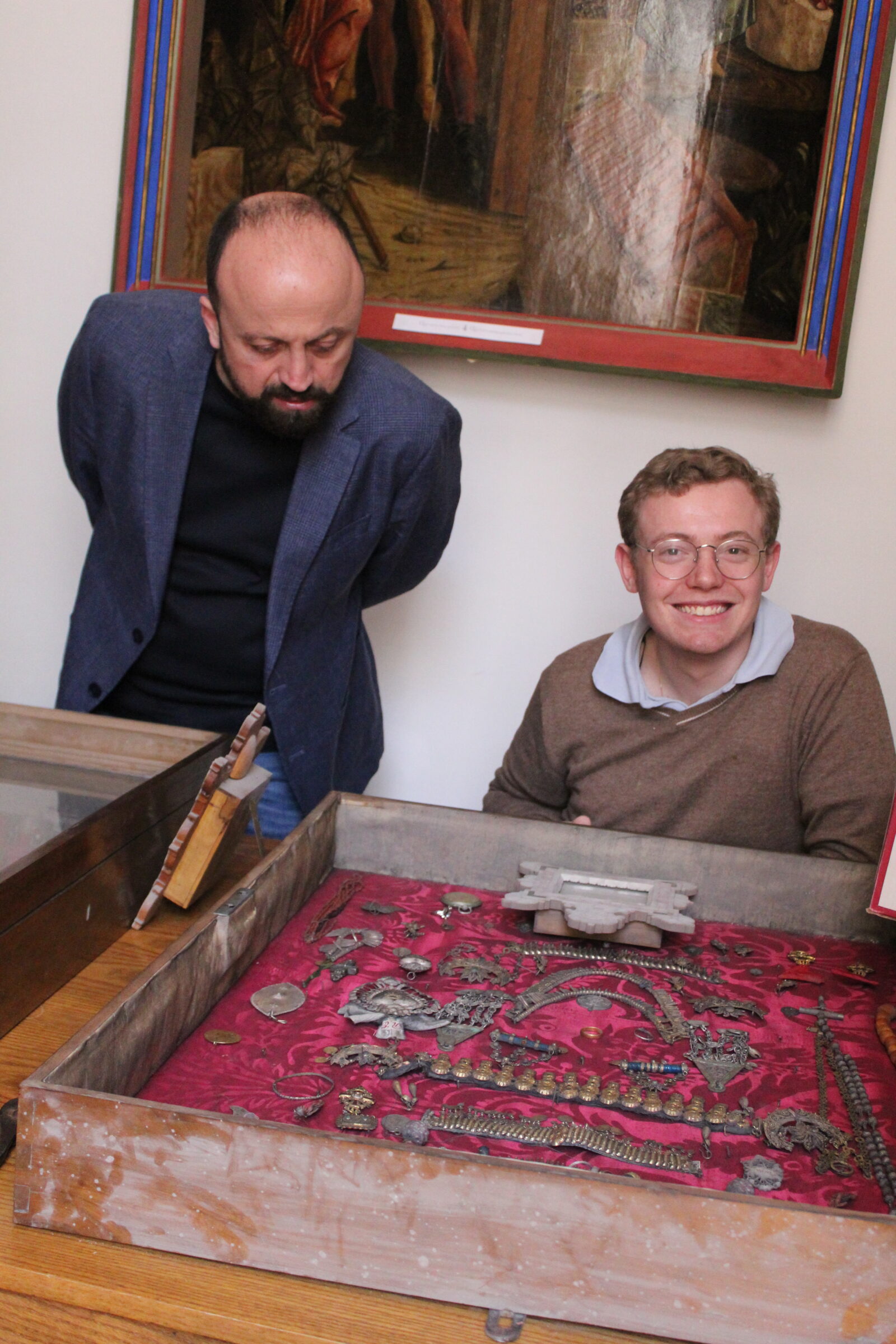
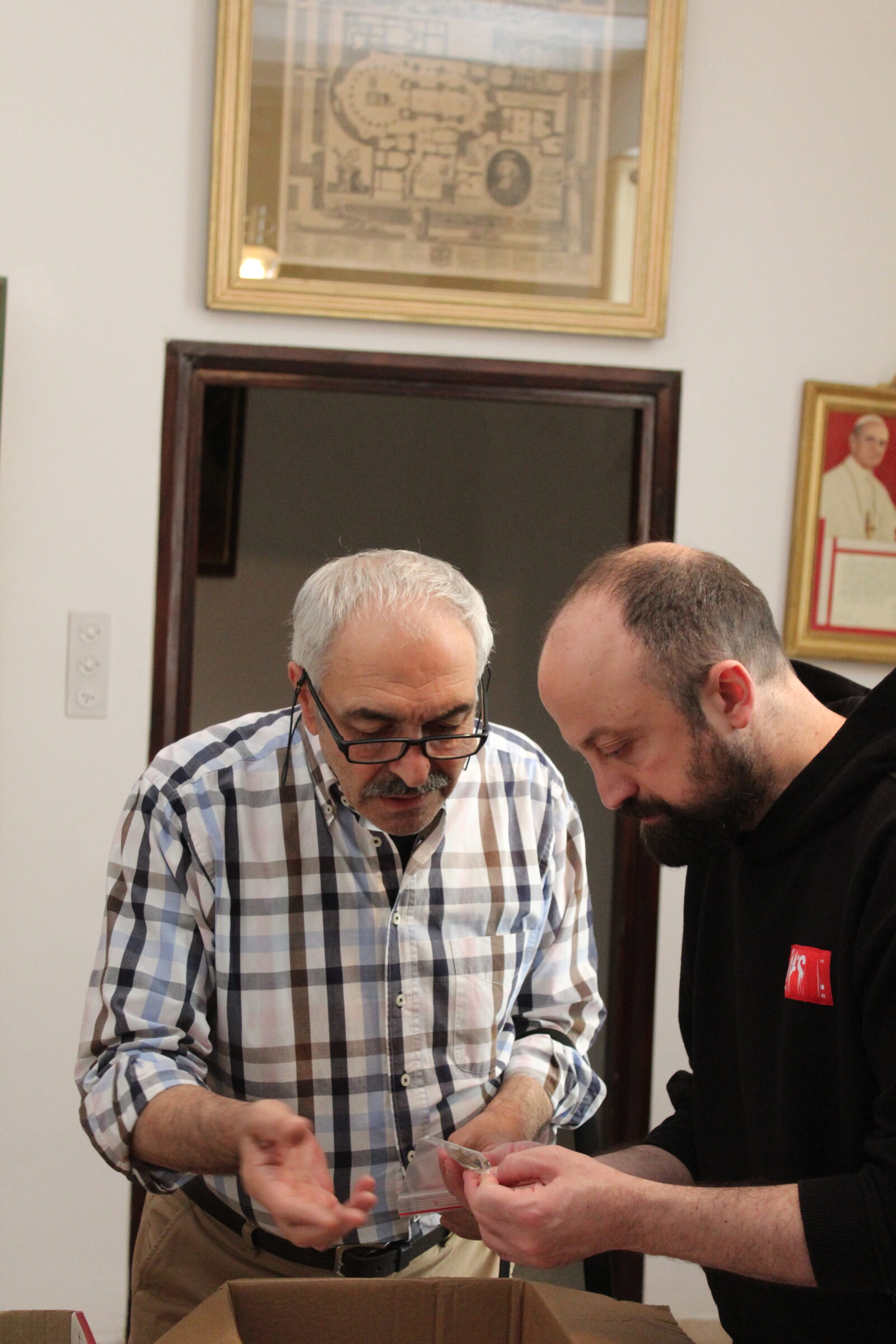
“I have never seen that,” whispered George picking up a bughmeh (a traditional Palestinian necklace) in the middle of small French votive hearts. Yet this specialist of traditional Palestinian costumes has held this type of jewellery in his hands more than once, but this particular one is made of gold: it is a unique example as all the known models are in silver. Jack confirmed that in forty years of career, it was the first time that he had had such a piece in front of him. A large medallion also attracted the attention of the two specialists : “It is 22 carat gold,” Jack immediately analysed. “And the engravings are the same as those for mother-of-pearl in Bethlehem,” George added, “it’s a real treasure, it must be added at all costs to the permanent exhibition of the museum.”
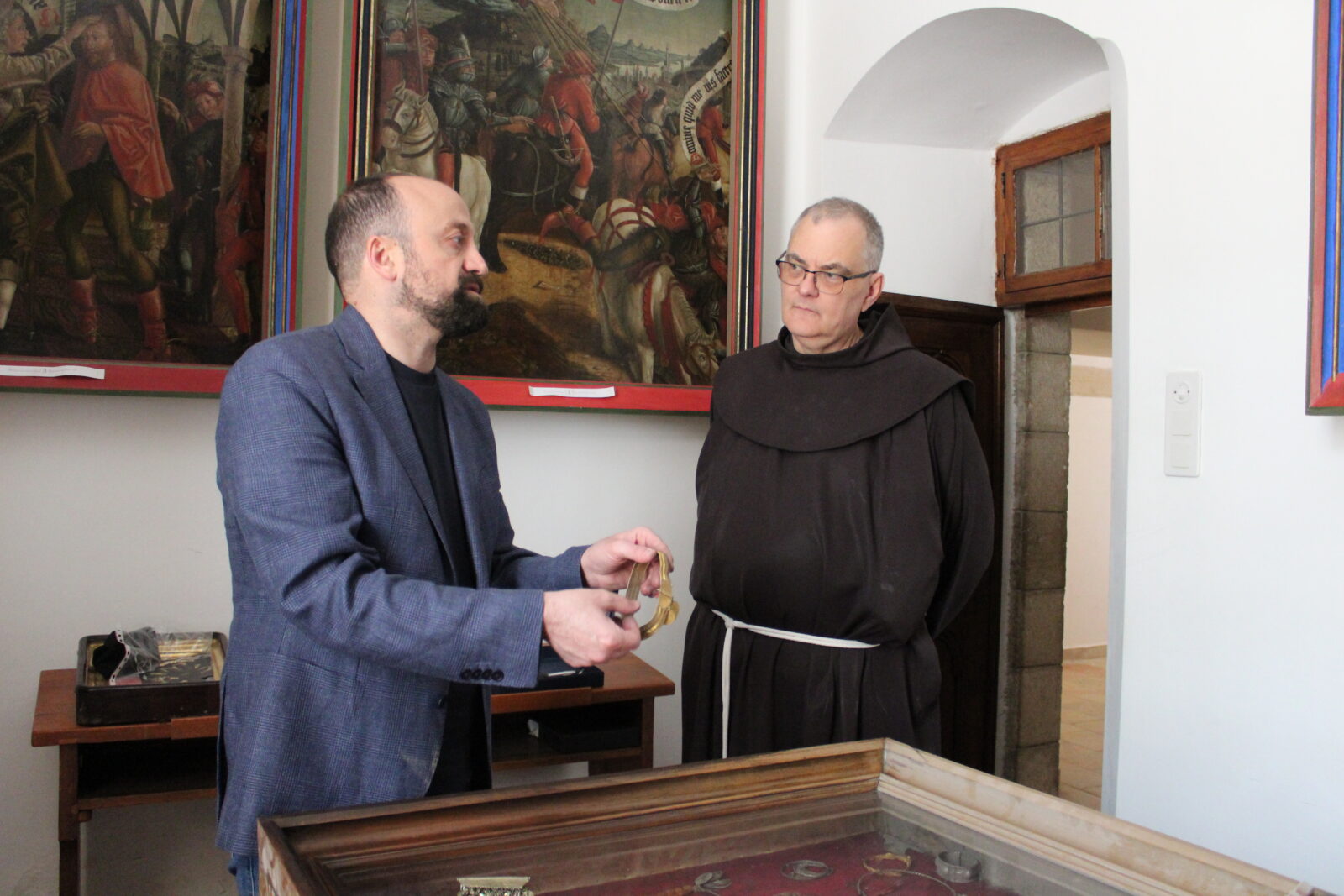
How can such a diversity of objects and origins in just 2 square metres of frames be explained? These frames, placed around the altar of the Virgin Mary, collected the ex-votos, these objects offered to ask for a favour or give thanks for another. Collected by the sacristans of St Saviour, they were hung up in the church, which is a custom in particular of the Orthodox.
Arranged, classified, in order and inventoried, these pieces of jewellery are now only waiting to be cleaned before being presented, some in the future museum, others in a small exhibition planned for autumn-winter 2023. In the meantime, they have not finished revealing their mysteries…
Thanks to: George Al’Ama, Jack Hawileh, Ilaria Turatti, Jorge Trejo
(Translated from French by Joan Rundo)



